Overview
Augmented reality (AR) and fashion are revolutionizing retail engagement by crafting immersive experiences that not only enhance customer interaction but also reduce return rates and significantly increase sales. Research indicates that various AR applications, including virtual try-ons and AR mirrors, have demonstrated the capacity to boost sales by up to 80% while simultaneously improving customer satisfaction. This compelling evidence underscores the effectiveness of AR in contemporary retail strategies. As brand managers, it is essential to recognize the transformative potential of AR and to consider integrating these proven strategies into your retail approach.
Introduction
Augmented reality is fundamentally reshaping the landscape of fashion retail, presenting innovative solutions that significantly enhance customer engagement and drive sales. As brands increasingly adopt immersive technologies, consumers are afforded unique opportunities to interact with products in ways that were previously unimaginable. However, as this transformation unfolds, critical questions emerge:
- How can retailers effectively leverage augmented reality to not only attract customers but also cultivate long-term loyalty in an ever-competitive market?
This article delves into ten compelling ways augmented reality is revolutionizing retail engagement within the fashion industry, revealing both the potential benefits and the challenges that lie ahead.
Magic Playbox: Pioneering Immersive AR Solutions for Fashion Retail
Magic Playbox has emerged as a leader in crafting immersive augmented reality (AR) solutions specifically designed for the fashion retail sector. By utilizing advanced technology, the studio creates interactive experiences that not only showcase products but also promote memorable audience engagement. This innovative method has demonstrated effectiveness, with AR implementations increasing sales by as much as 80% for companies utilizing these solutions.
For instance, the Clothr app, developed in partnership with local labels, has effectively lowered return rates by enabling shoppers to virtually try on products, showcasing the concrete advantages of AR in retail. With a collection of over 100 successful projects, Magic Playbox illustrates how AR can transform client interactions and enhance loyalty in a competitive retail environment.
As the sector shifts towards more individualized purchasing interactions in 2025, the incorporation of AR continues to transform how buyers connect with brands, making immersive narratives a vital aspect in improving client satisfaction and loyalty.
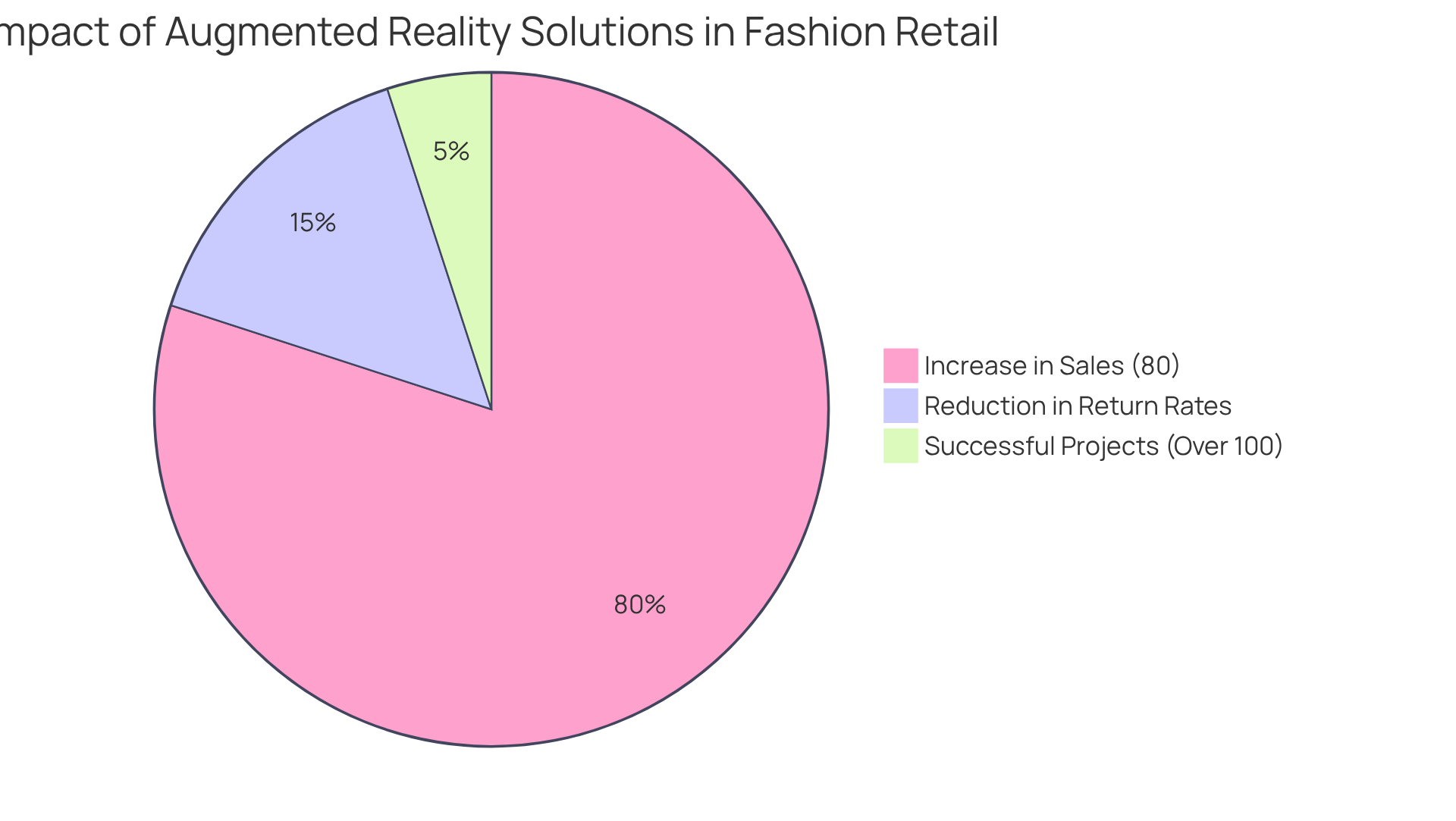
AR Mirrors: Enhancing Customer Interaction in Fashion Retail
Augmented reality and fashion are revolutionizing the way consumers interact with fashion products in retail environments through the use of AR mirrors. These cutting-edge mirrors represent a fusion of augmented reality and fashion, empowering shoppers to virtually try on clothing and accessories, effectively eliminating the need for traditional fitting rooms.
By projecting digital images onto the individual’s reflection, AR mirrors create an engaging interaction that significantly boosts customer satisfaction. Retailers adopting AR mirrors have reported increased dwell time and conversion rates, with studies indicating that augmented reality and fashion modules can enhance sales by as much as 80%.
This technology not only enriches the shopping experience but also reduces return rates, establishing a mutually beneficial scenario for both consumers and retailers. Furthermore, the integration of visual tags on apparel enhances the motion capture capabilities of augmented reality and fashion applications, facilitating real-time fitting simulations that allow individuals to make informed purchasing decisions.
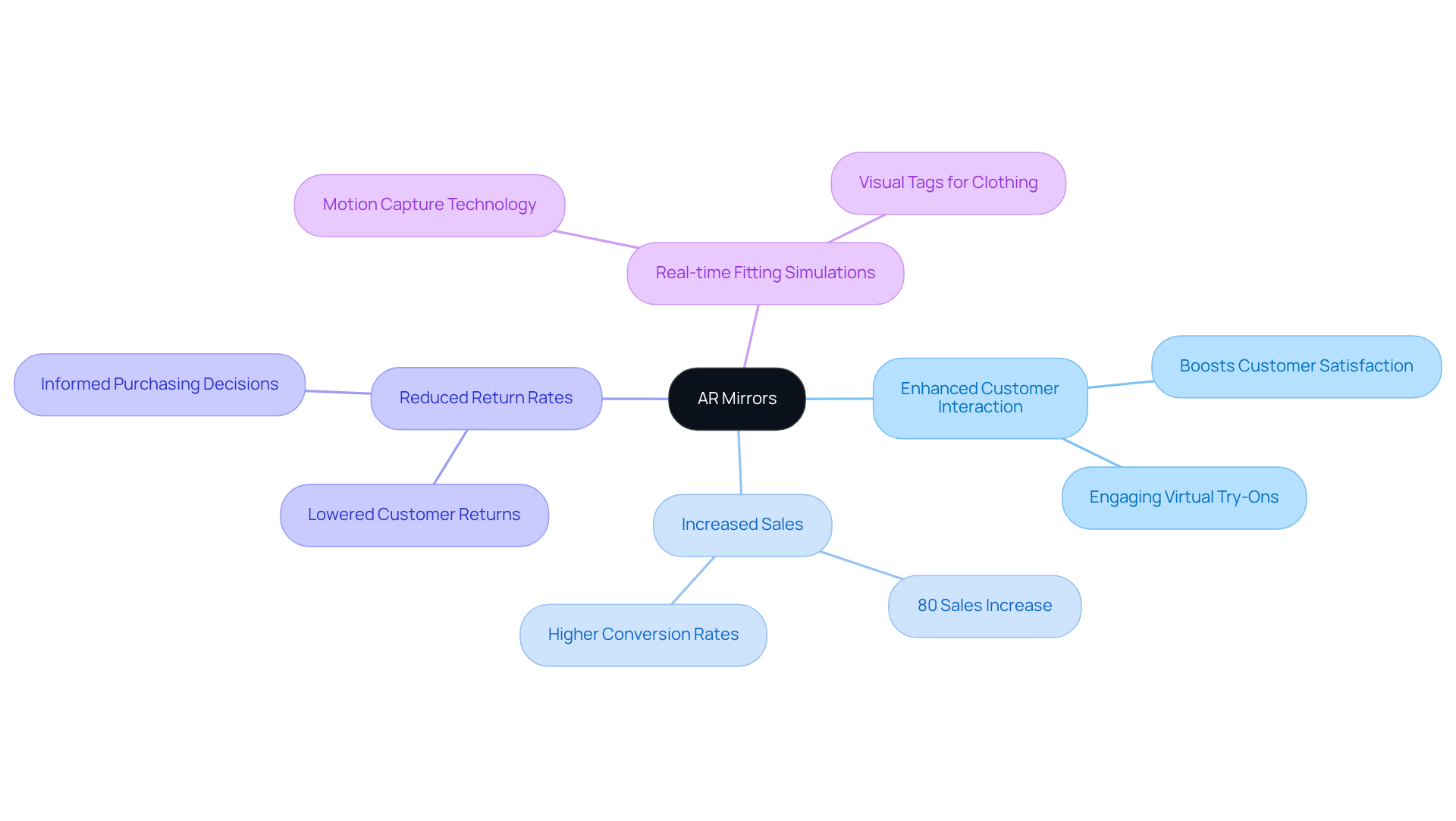
Virtual Try-Ons: Transforming the Online Shopping Experience
Virtual try-ons have revolutionized the online fashion retail landscape, enabling shoppers to visualize how clothing and accessories will appear on them before making a purchase. By harnessing augmented reality and fashion technology, companies can provide a personalized shopping experience that significantly reduces return rates.
Research indicates that individuals utilizing virtual try-on features are 30% more likely to complete a purchase, as they can assess how items complement their body type and align with their style preferences. This innovation not only enhances customer confidence but also fosters a deeper emotional connection between consumers and brands.
For example, Avon Products reported an impressive 320% increase in conversions and a 33% rise in average order value following the implementation of virtual try-on technology. Furthermore, retailers employing this technology experience a 20-30% reduction in return rates, underscoring its effectiveness in improving business metrics.
As Taiwo Meghoma, a leading fashion expert, states, "The future of the work in the fashion industry will be driven by data," highlighting the necessity of integrating such technologies to meet evolving consumer expectations.
In summary, virtual try-ons, which incorporate augmented reality and fashion, are not merely a passing trend; they are a vital component of modern retail strategies, driving sales and enhancing client loyalty.
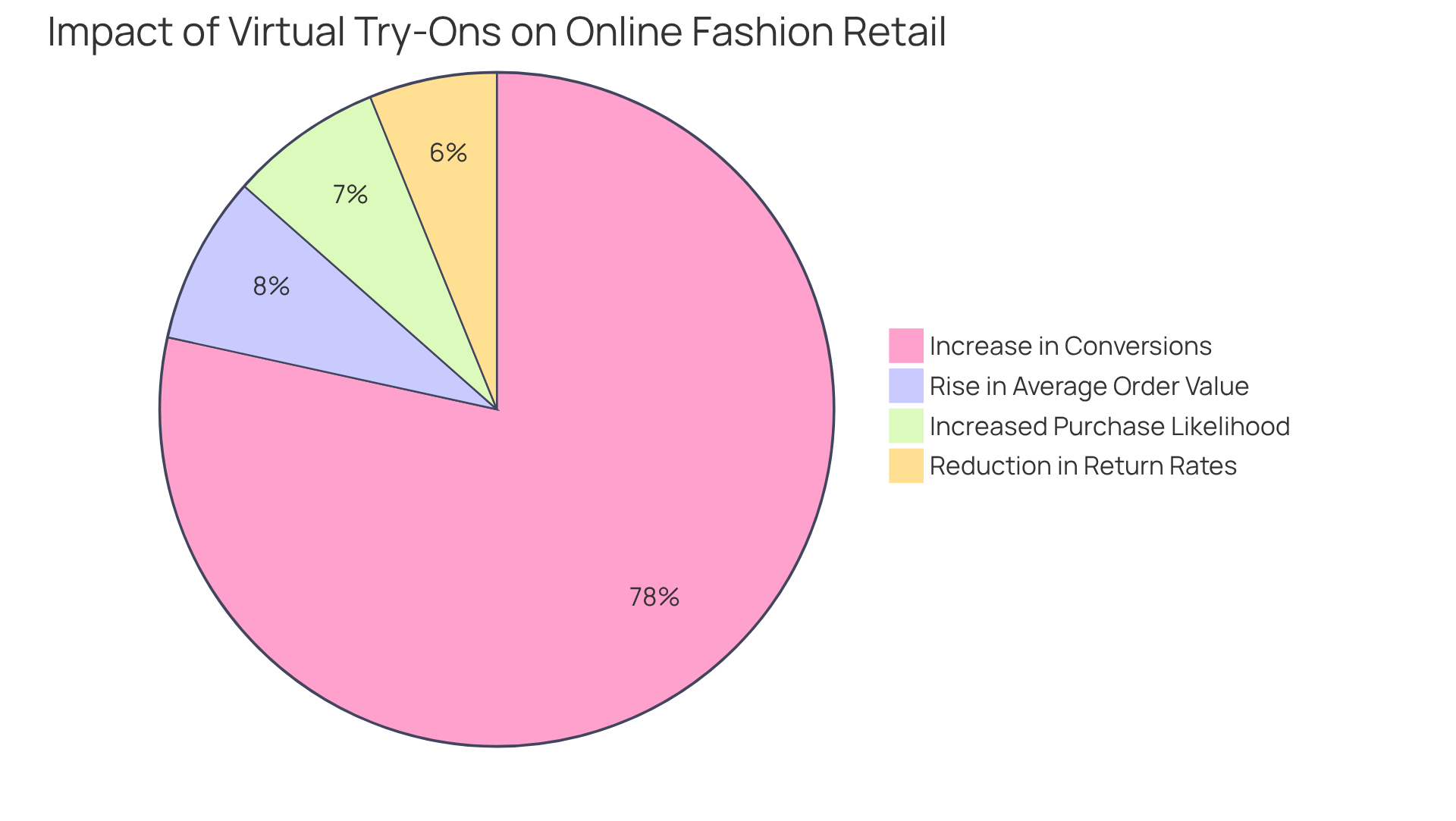
AR Applications: Driving Engagement and Sales in E-Commerce
Applications of augmented reality and fashion are rapidly revolutionizing the e-commerce landscape, providing companies with innovative methods to engage with customers. By integrating interactive catalogs and gamified shopping experiences, AR significantly enhances the online shopping journey, making it more immersive and enjoyable.
For example, brands can develop AR interactions that allow customers to visualize products within their own environments, captivating users and leading to increased engagement rates. Research indicates that AR can boost conversion rates by as much as 30%, highlighting its effectiveness as a strategic asset for retailers seeking to enhance their digital footprint.
Furthermore, AR interactions have been reported to be 200% more engaging than traditional methods, with 71% of consumers indicating they would shop more frequently if AR were available. This compelling blend of engagement and conversion potential positions augmented reality and fashion as a transformative force in online apparel retail.
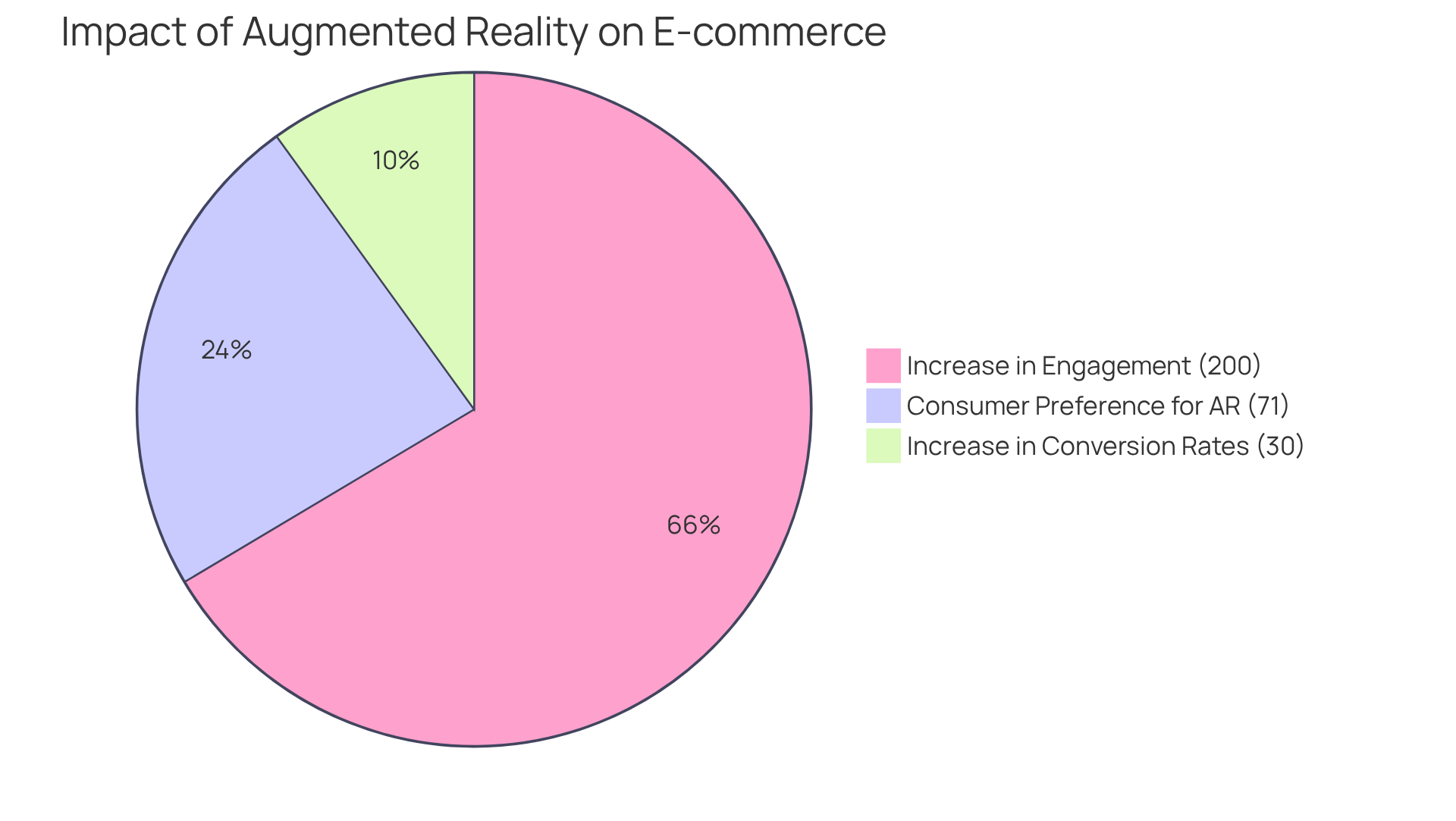
Data-Driven Insights: Personalizing Fashion Retail with AR
Data-driven insights are essential for personalizing the fashion retail experience, with augmented reality and fashion technology playing a pivotal role in this transformation. By analyzing customer interactions with AR features, companies gather valuable data on preferences, behaviors, and trends. This information empowers retailers to tailor their offerings and marketing strategies to effectively meet the needs of their target audience.
For example, using augmented reality and fashion can identify which styles resonate most with specific demographics, enabling companies to craft targeted campaigns that truly connect with consumers. Personalization not only enhances the shopping experience but also cultivates brand loyalty, driving sustained engagement and sales.
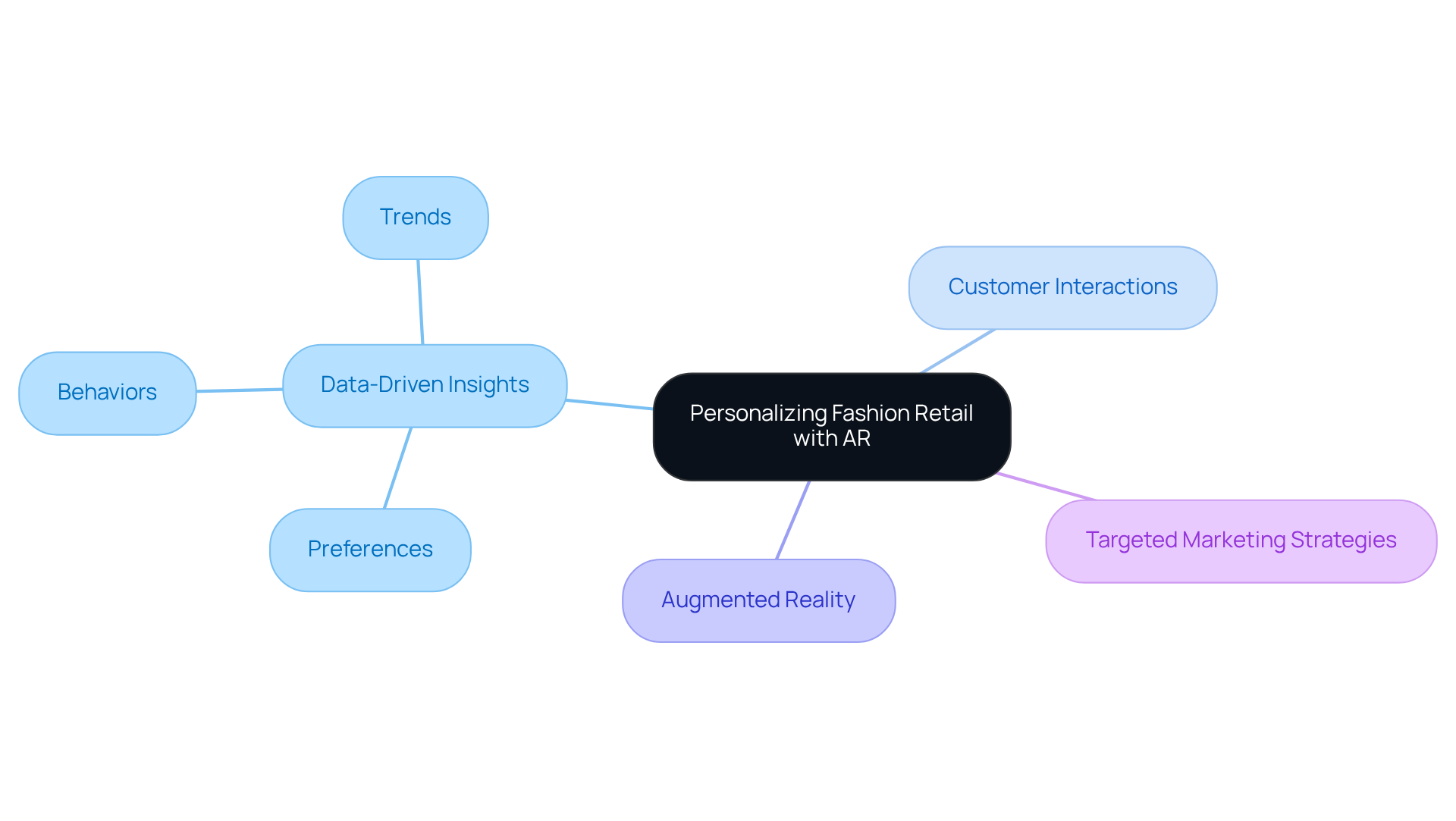
Sustainability: Reducing Waste Through AR Innovations
Sustainability is increasingly essential in the apparel industry, and innovations in augmented reality and fashion, particularly those developed by Magic Playbox, are at the forefront of minimizing waste and promoting eco-friendly practices. By facilitating virtual try-ons, augmented reality and fashion technology substantially reduces the need for physical samples, thereby lessening the environmental impact associated with returns and overproduction.
Research indicates that the integration of augmented reality and fashion can lead to a remarkable 46% reduction in carbon emissions during online shopping, underscoring its potential to revolutionize traditional retail practices. Furthermore, AR significantly enhances consumer decision-making by allowing individuals to visualize how products will fit and appear before making a purchase. This capability not only mitigates waste but also fosters more conscious consumer choices, aligning with the growing demand for augmented reality and fashion in the market.
Notably, 80% of consumers report feeling more confident in their purchases due to AR, reinforcing its positive influence on consumer behavior and sustainability. As companies increasingly adopt solutions that combine augmented reality and fashion, including those from Magic Playbox, they are enhancing user experiences while contributing to a healthier planet, with 93% of consumers maintaining or increasing their purchases of sustainable products recently.
E-commerce managers should leverage these innovations in augmented reality and fashion to bolster sustainability and client engagement strategies.
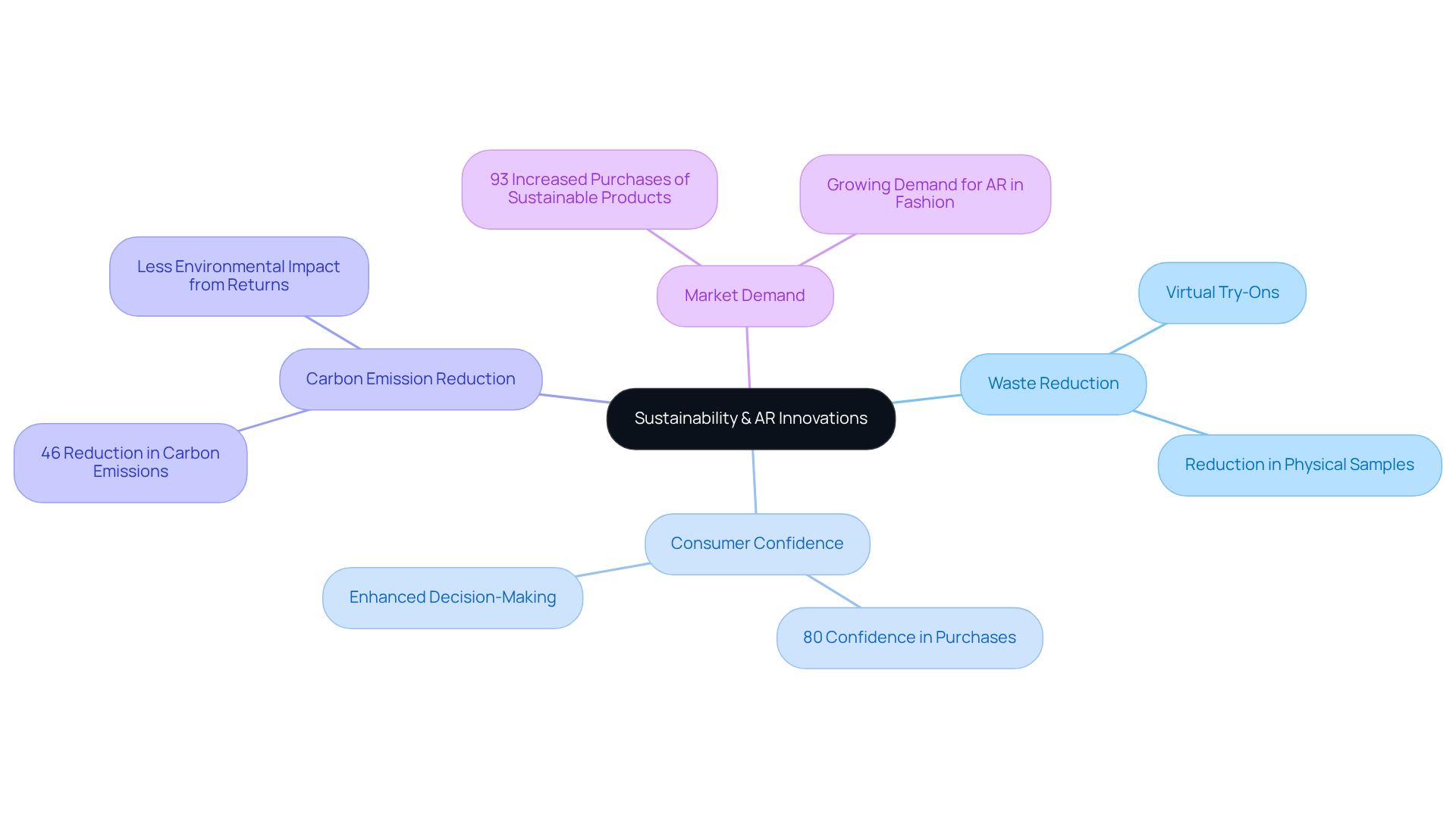
Mobile AR and Wearables: The Future of Fashion Interaction
The integration of augmented reality and fashion, along with wearable technology, is poised to revolutionize consumer interactions with fashion brands. As smartphones increasingly integrate AR capabilities, retailers can craft fluid shopping experiences that enable users to engage with products in real-time. Wearable devices, such as AR glasses, provide tailored suggestions and enhance the shopping process by overlaying digital information onto the physical world. The convergence of augmented reality and fashion not only boosts consumer engagement but also unveils new pathways for brands to connect with their audience in innovative ways.
Research indicates that AR applications can significantly reduce return rates by allowing buyers to visualize how items fit and appear on their bodies before making a purchase, creating vast opportunities for immersive shopping experiences. Retailers leveraging AR find that customers engaged in AR interactions tend to browse longer and make more informed purchasing decisions, ultimately driving sales. For instance, H&M's campaign enabling users to 'try on' virtual outfits and Burberry's partnership with Google for 3D product views exemplify how augmented reality and fashion are not merely trends; they represent a strategic decision to attract tech-savvy consumers seeking distinctive and engaging interactions.
Moreover, AR contributes to sustainable practices by decreasing the need for physical samples and minimizing returns, establishing itself as a crucial resource for future growth in the retail industry. The time to embrace this technology is now—collaborate with AR solutions to enhance your brand's appeal and meet the evolving expectations of today's consumers.
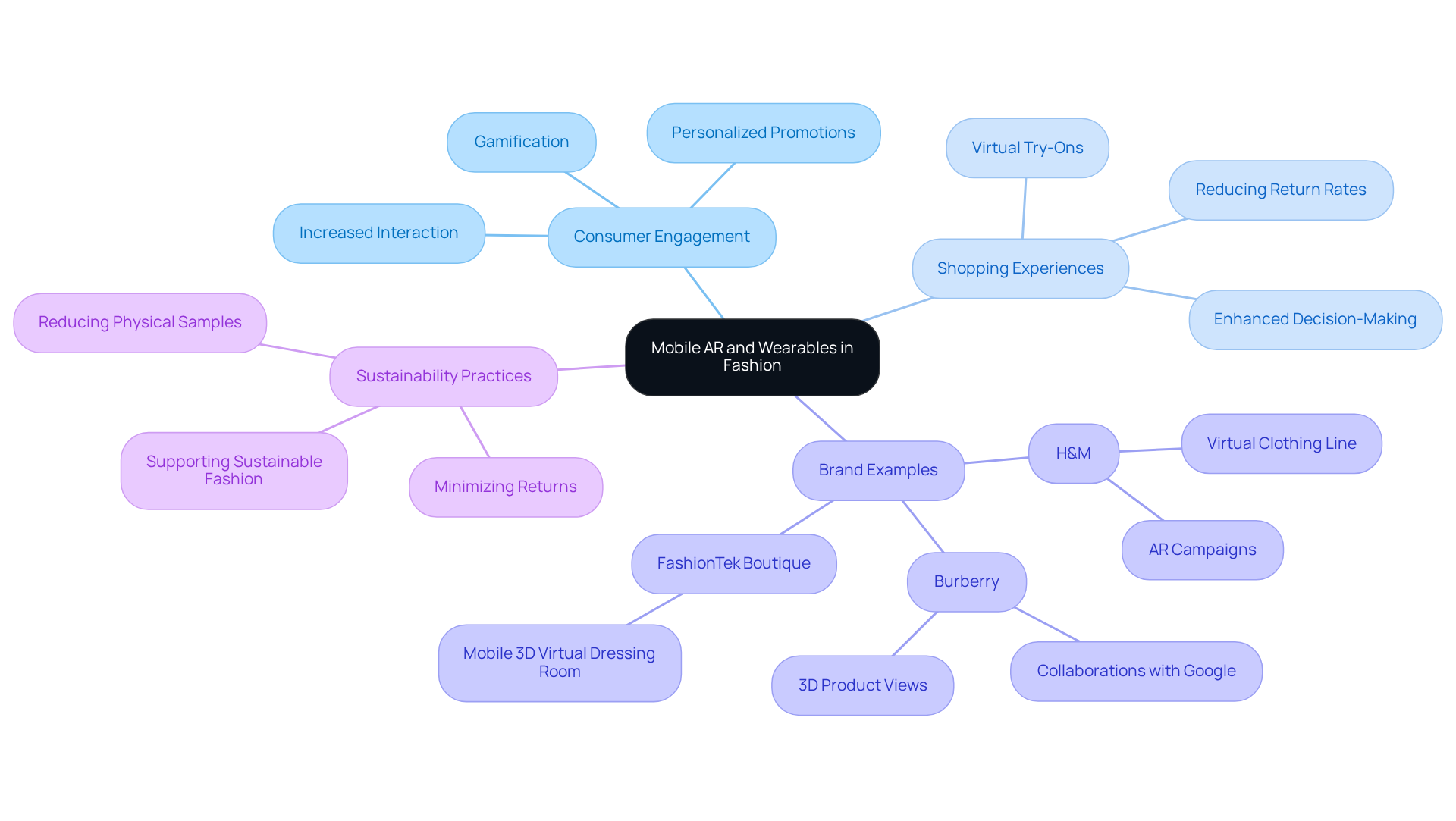
Metaverse Collaborations: Expanding Fashion Retail Horizons
The metaverse is revolutionizing retail within the clothing industry, enabling companies to craft engaging experiences that transcend traditional shopping methods. By forging partnerships in this digital realm, clothing brands can tap into new audiences and engage consumers in innovative ways. For example, virtual runway events and online shops serve as unique platforms for brands to unveil their collections and foster direct interaction with clients.
A notable instance is Louis Vuitton's NFT-focused game, which garnered over 2 million downloads, illustrating the power of gaming as an entry point into the metaverse. Furthermore, Magic Playbox is at the forefront of immersive AR interactions that enhance company engagement and customer loyalty, allowing retailers to create captivating virtual environments.
As this sector continues to evolve, it presents exciting opportunities for retailers to broaden their reach and redefine the shopping experience, ultimately enhancing brand recognition and customer loyalty. The integration of augmented reality and fashion within these spaces not only captivates users but also transforms their perceptions and interactions, with AR modules shown to increase sales by up to 80%.
This underscores the metaverse's critical role in the future of retail, as highlighted by Daniel Grieder, CEO of HUGO BOSS, who emphasizes the necessity of leveraging opportunities in this space for effective brand storytelling.
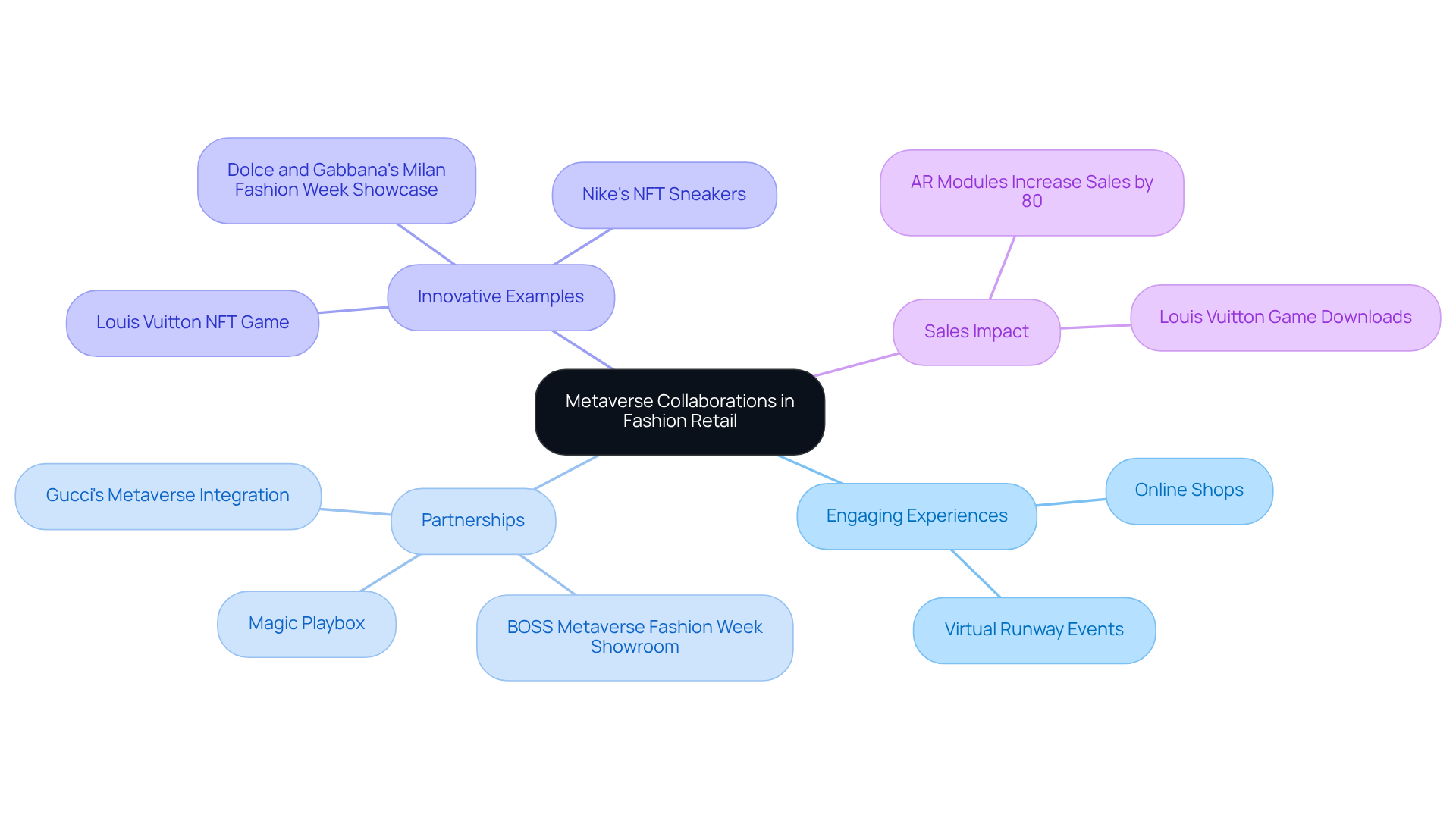
In-Store AR Experiences: Engaging Customers in Physical Retail
In-store AR interactions are becoming essential for engaging customers in physical retail environments. By incorporating augmented reality and fashion into physical stores, retailers can create interactive displays and engagements that captivate shoppers.
For instance, augmented reality and fashion can be showcased through AR-enabled product displays that provide additional information, promotions, or even virtual try-on options, significantly enhancing the overall shopping experience. These immersive interactions not only attract patrons into stores but also motivate them to spend more time exploring products.
Ultimately, this leads to increased sales and improved client satisfaction. Retailers who embrace augmented reality and fashion technology position themselves at the forefront of innovation, ready to meet the evolving demands of today's consumers.
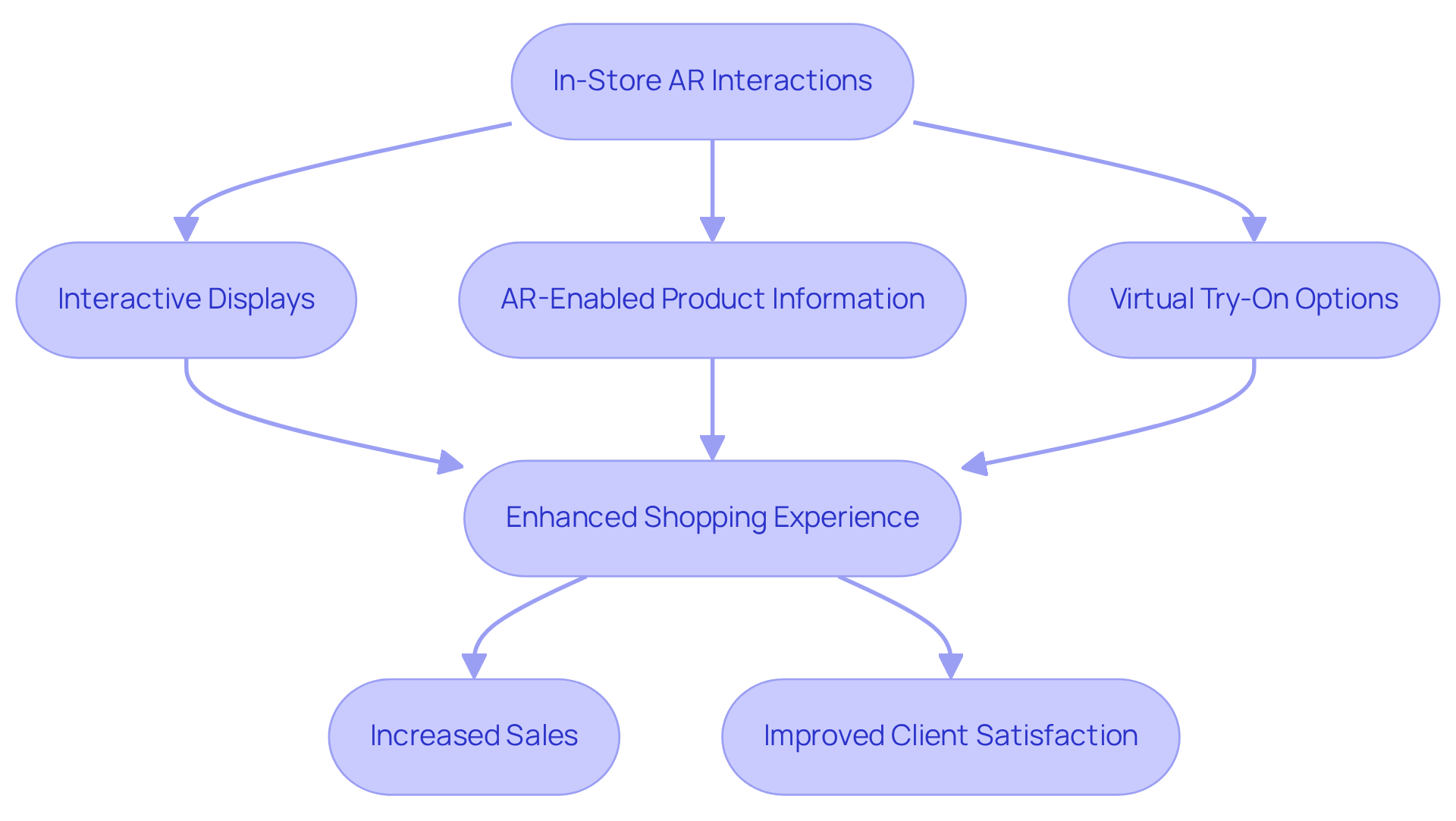
The Future of Fashion Retail: Embracing AR for Customer Loyalty
The future of fashion retail is increasingly intertwined with augmented reality (AR), a vital component in cultivating client loyalty. By offering engaging and interactive experiences, companies can strengthen their relationships with customers. AR technology personalizes the shopping journey, rendering it more relevant and enjoyable. Research indicates that AR product interactions are 200% more captivating than their non-AR counterparts, significantly enhancing client satisfaction. Brands like Canada Goose and Dior are leading the way by integrating AR features for virtual try-ons, not only elevating the shopping experience but also reducing return rates, which fosters greater consumer trust and loyalty.
Moreover, with 75% of consumers aged 16 to 44 recognizing AR, the integration of this technology into retail has become essential for brands aiming to differentiate themselves in a competitive market. The AR apparel market is projected to reach a valuation of $38.6 billion by 2024, presenting brands with substantial opportunities to leverage AR for improved customer engagement and loyalty. By continually innovating and embracing AR, retailers can secure enduring success in the ever-evolving landscape of fashion retail.
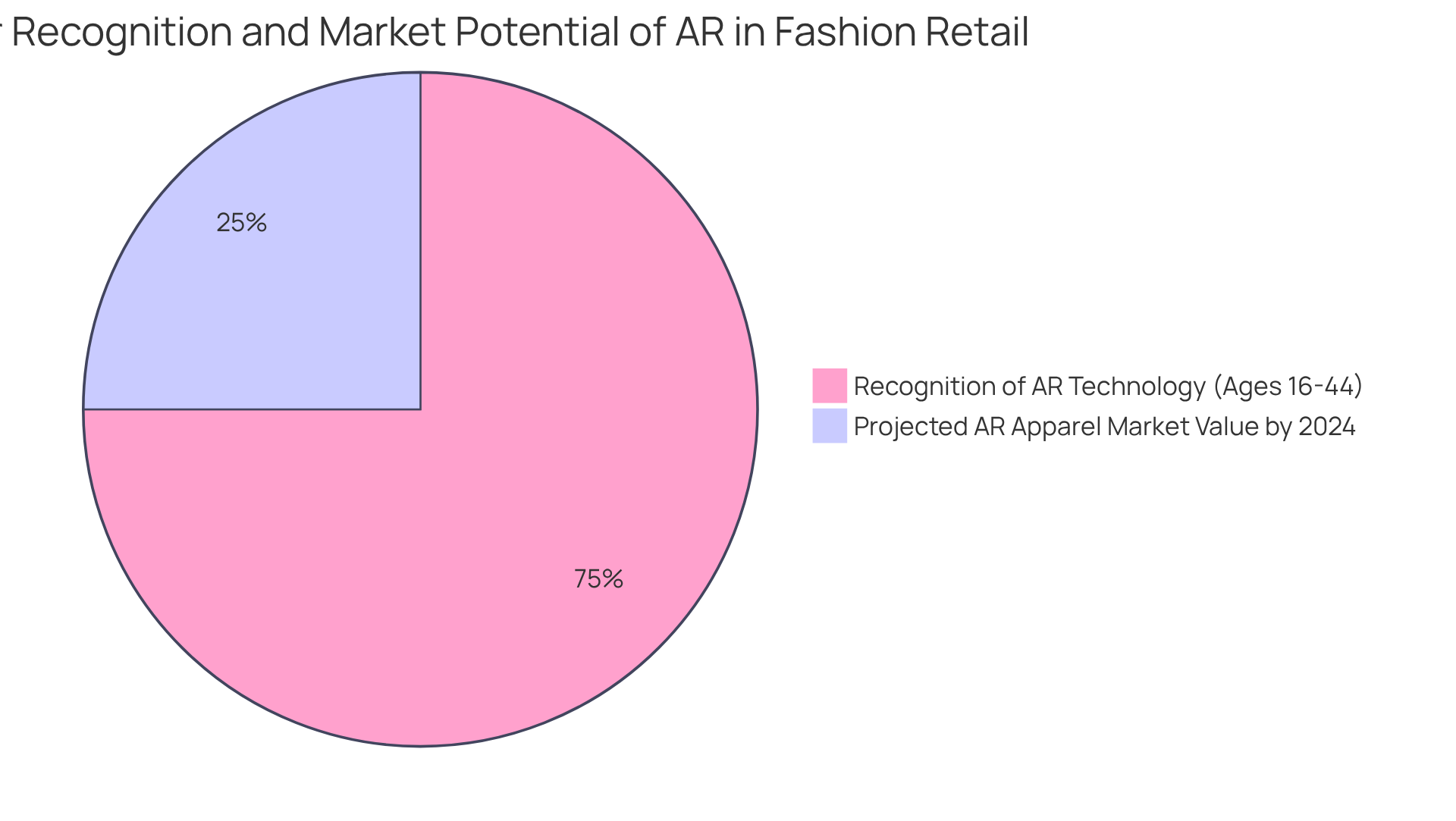
Conclusion
The integration of augmented reality (AR) into fashion retail is not merely a fleeting trend; it is fundamentally reshaping the way consumers engage with brands and products. By harnessing AR technology, retailers are crafting immersive experiences that enhance customer interactions, drive sales, and promote sustainability. This transformation manifests across various applications, from virtual try-ons to AR mirrors, all of which significantly improve the shopping experience while fostering deeper connections between consumers and brands.
Key insights from the discussion reveal that AR solutions, such as those developed by Magic Playbox, have been pivotal in reducing return rates and increasing customer satisfaction. Research indicates that a data-driven approach to personalization allows retailers to tailor their offerings, creating a more engaging shopping journey. Moreover, the metaverse presents exciting opportunities for brands to innovate and reach new audiences, further expanding the horizons of retail engagement.
As the fashion industry progresses towards 2025, embracing AR technology will be crucial for companies aiming to maintain a competitive edge. Retailers are encouraged to invest in these interactive solutions not only to enhance customer experiences but also to contribute to sustainable practices. The future of fashion retail lies in the seamless integration of AR, promising a more engaging, personalized, and environmentally conscious shopping landscape.
Frequently Asked Questions
What is Magic Playbox and its role in fashion retail?
Magic Playbox is a leader in creating immersive augmented reality (AR) solutions for the fashion retail sector, crafting interactive experiences that enhance product showcasing and audience engagement.
How effective are AR solutions in increasing sales for fashion retailers?
AR implementations have been shown to increase sales by as much as 80% for companies that utilize these solutions.
What is the Clothr app and how does it benefit shoppers?
The Clothr app, developed by Magic Playbox in partnership with local labels, allows shoppers to virtually try on products, effectively lowering return rates and showcasing the advantages of AR in retail.
How many projects has Magic Playbox completed, and what do they illustrate?
Magic Playbox has completed over 100 successful projects, demonstrating how AR can transform client interactions and enhance customer loyalty in a competitive retail environment.
What is the significance of AR mirrors in fashion retail?
AR mirrors allow consumers to virtually try on clothing and accessories, enhancing customer interaction and satisfaction while eliminating the need for traditional fitting rooms.
How do AR mirrors impact customer engagement and sales?
Retailers using AR mirrors have reported increased dwell time and conversion rates, with studies indicating that sales can enhance by up to 80% due to this technology.
What are the benefits of using virtual try-ons in online shopping?
Virtual try-ons enable shoppers to visualize how clothing and accessories will look on them, significantly reducing return rates and enhancing customer confidence in their purchasing decisions.
How do virtual try-ons affect purchase behavior?
Individuals using virtual try-on features are 30% more likely to complete a purchase, as they can better assess how items complement their body type and style preferences.
Can you provide an example of a company that benefited from virtual try-on technology?
Avon Products reported a 320% increase in conversions and a 33% rise in average order value after implementing virtual try-on technology.
What future trends are expected in the fashion industry regarding technology?
The fashion industry is expected to be driven by data, with an increasing necessity to integrate technologies like AR to meet evolving consumer expectations and enhance client loyalty.




